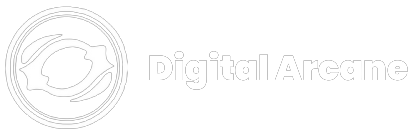Designing a logo for a t-shirt is an exciting way to showcase your brand, promote a cause, or simply express your creativity. With some planning and effort, you can create a logo that will make your t-shirts stand out. This article will provide tips on how to design an effective and eye-catching logo for a t-shirt in 2024.
Table of Contents
Define Your Brand and Audience
The first step in designing a t-shirt logo is to have a clear understanding of your brand identity and target audience.
- What is the personality and essence of your brand? Is it bold, playful, elegant?
- Who will be wearing the t-shirts? Men, women, teenagers, sport fans?
Knowing this information will help guide the tone and style of the logo. For example, a logo for a children’s nonprofit may incorporate bright colors and friendly shapes, while one for an outdoor apparel company could use earth tones and nature motifs.
Research Competitor and Industry Logos
Conduct research on logos from competitors and others in your industry. This will help generate ideas and inspiration while ensuring your logo stands apart.
- Make note of popular colors, fonts, icons and designs.
- Identify overused approaches to avoid.
- Look for creative ways competitors distinguish their logos.
Borrowing directly from others is never advisable, but researching trends and styles can spark innovation.
Choose a Style and Concept
With your brand identity and audience in mind, start conceptualizing potential logo styles and imagery.
Popular options include:
- Abstract: Using shapes, lines and colors to create an artistic symbol. Allows room for interpretation.
- Mascot: A illustrated character that personifies the brand. Friendly and approachable.
- Lettermark: Stylizing the brand’s initials into a graphic logo. Simple and bold.
- Pictorial: Literally depicting the brand name, product or industry. Clear communicator.
- Combination: Blending two or more approaches, like an abstract icon with the brand name. Provides reinforcement.
Think about the impression you want to convey and choose a style accordingly. Create rough sketches to explore visual directions.
Powerful Logo Designing Software
When it comes to creating a logo for your t-shirt, you’ll want access to professional design tools. While beginners may be tempted to use free options like Canva, more advanced programs can take your logo further. Illustrator is industry standard software for professional graphic design and offer robust features for working with vector images and typography, that’s why it’s perfect for T-shirt log designing. For open source alternatives, GIMP provides raster graphics editing similar to Photoshop, while Inkscape offers vector tools comparable to Illustrator. CorelDRAW is another popular vector graphics editor used by many professionals. The learning curve may be steeper, but investing time in these powerful design platforms will give you greater creative control and polish for crafting eye-catching t-shirt logos.
Design With Consistency and Versatility in Mind
When designing your t-shirt logo, balance visual flair with consistency and versatility. An adaptable logo can be used across various mediums and applications.
- Use consistent elements: Keep core shapes, fonts, colors consistent. This strengthens brand recognition.
- Limit complexity: Overly intricate details won’t scale well or translate to embroidery. Prioritize bold, simple shapes.
- Try it in black and white: A logo should look distinctive even without color. B&W versions allow production flexibility.
- Imagine different sizes: Test how it looks when very small (a tag) and very large (a billboard). Details shouldn’t get lost.
Creating a flexible, scalable logo ensures it works across t-shirts, websites, signs and other brand touchpoints.
Choose Typography That Complements Your Design
For logos with text, typography is just as crucial as imagery. When selecting a font:
- Match brand personality: Fonts have associative qualities. For example, bubbly and playful or sleek and modern.
- Prioritize legibility: Avoid overly elaborate script and display fonts. Opt for easy to read letterforms, even at small sizes.
- Consider versatility: Find a font that works on apparel but also for headlines, packaging etc.
- Limit font pairs: Stick to 1 or 2 complementary fonts. Too many looks unpolished.
- Check licensing: Use fonts that permit commercial application. Free fonts often have usage restrictions.
Pro tip: Modify letters with your brand colors or effects to tie typography and imagery together.
Use Meaningful, Memorable Colors
Color is a quick way to communicate ideas and emotion. When choosing hues:
- Align with brand identity: Recurring colors reinforce recognition and associations.
- Evoke the right mood: Colors have psychological impacts. Blue = trustworthy, green = natural, red = excitement.
- Ensure sufficient contrast: Dark logos on light shirts and vice versa. Don’t use colors that visually blend together.
- Limit palette: With apparel production, it’s best to use 3 or fewer colors. This controls costs.
- Consider prominent apparel colors: Will your logo colors work on common t-shirt colors like black, white and grey?
A strategic use of color makes your logo eye-catching and meaningful.
Refine and Finalize Your Design
With the main elements in place, refine the logo through an iterative process:
- Simplify shapes: Remove any excessive details. Retain the most recognizable essence.
- Align and scale elements: Ensure consistent relative sizes, equal spacing and alignment.
- Try different compositions: Explore placing visuals in different positions and relationships.
- Test on mockups: Visualize on t-shirt, website and other mockups. Does it read well and represent your brand?
- Do quality checks: Review at different sizes, in black and white, and on colored backgrounds.
Take time to carefully polish your logo until it feels sharp, balanced and conveys exactly what you want. The end result will be an impactful, professional logo design.
Produce Your Logo Digitally
Once finalized, create digital vector artwork of your logo. Unlike raster images, vector graphics are resolution independent and scale cleanly to any size.
You can also digitize your logo yourself using:
- Inkscape: Free open source vector editor. More limited capabilities than Illustrator.
- Vectr: Simple free web and app based vector tool.
Or hire a graphic designer skilled in vector tools to flawlessly execute your vision. This ensures a clean, production-ready logo file.
Your final vector logo can be used for t-shirt printing, websites, signs, embroidery, and more.n.
Key Takeaways for Designing an Effective T-Shirt Logo
To summarize, follow these best practices when creating your t-shirt logo:
- Reflect your brand identity and target audience
- Research competitors but aim for originality
- Pick a style that communicates your message
- Design for consistency and adaptability
- Choose complementary typography
- Use symbolic, memorable colors
- Refine details until polished and balanced
- Digitize as vector artwork for clean reproduction
- Export universal file formats
By taking a strategic approach and applying these principles, you can develop a t-shirt logo that stands out, engages customers and strengthens your brand.
Hire a Pro for a Polished, Impactful Logo
While designing your own t-shirt logo can be rewarding, but for a truly professional, eye-catching result, consider hiring an experienced graphic designer. A talented pro will:
- Expertly apply design fundamentals
- Provide objective guidance and feedback
- Create on-brand, memorable visuals that excite people
- Flawlessly execute your vision
- Deliver print ready, adaptable digital files
- Save you time, effort and missteps
At Digital Arcane, our talented designers specialize in crafting custom t-shirt logos clients rave about. We’d love to discuss designing an amazing logo for your brand’s apparel line.
Final Thoughts
Designing a logo from scratch takes time, effort and skill. But with careful planning and by following core principles of effective logo design using our guide, you can develop a t-shirt logo that captivates customers and comes to uniquely represent your brand. Alternatively, hiring a professional graphic designer can help bring polished design expertise and objective guidance to your t-shirt logo project.





